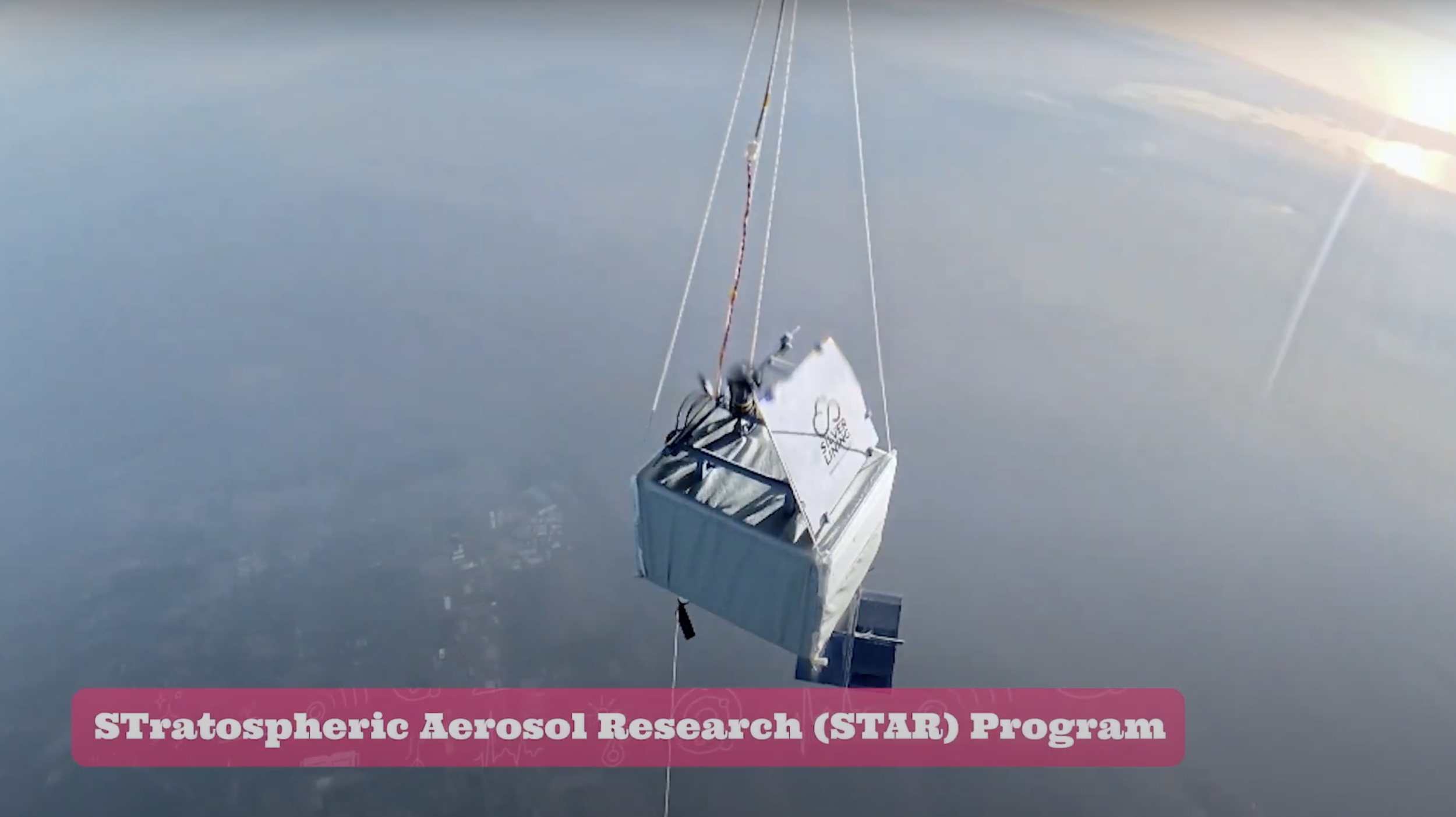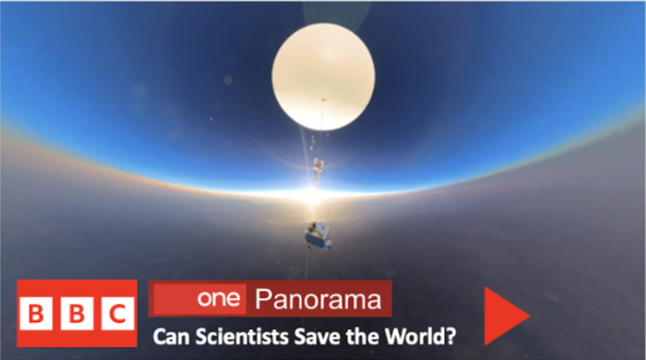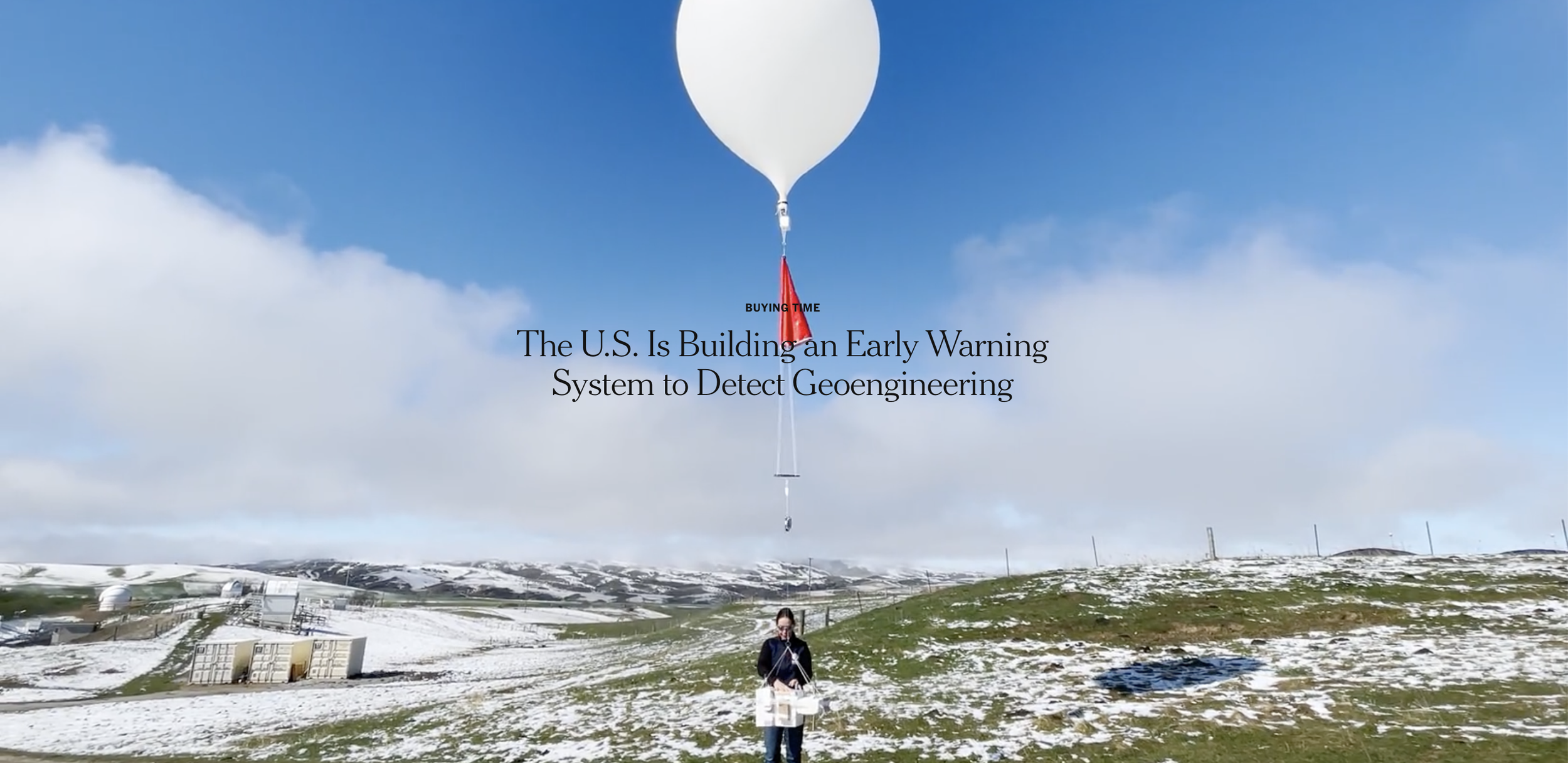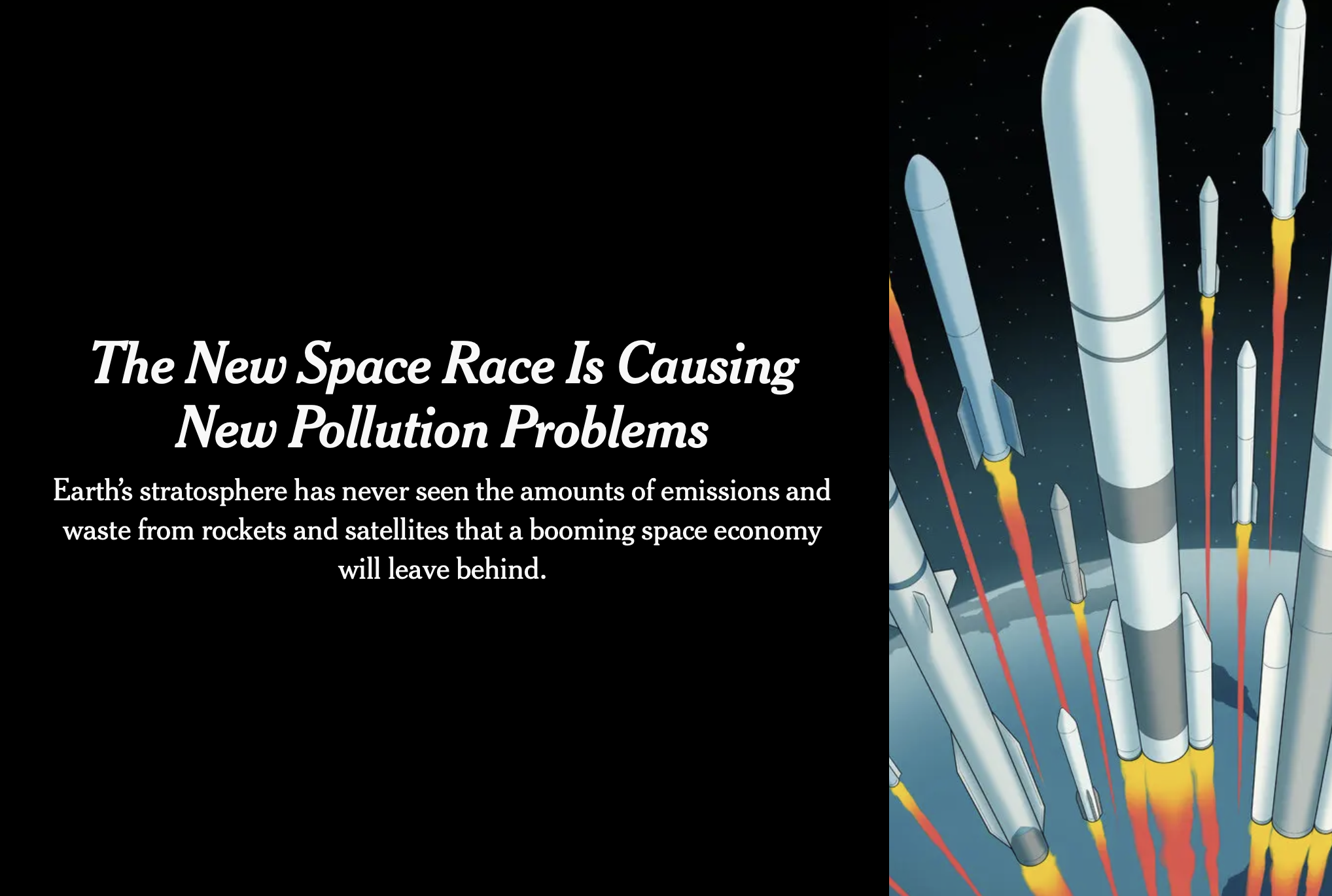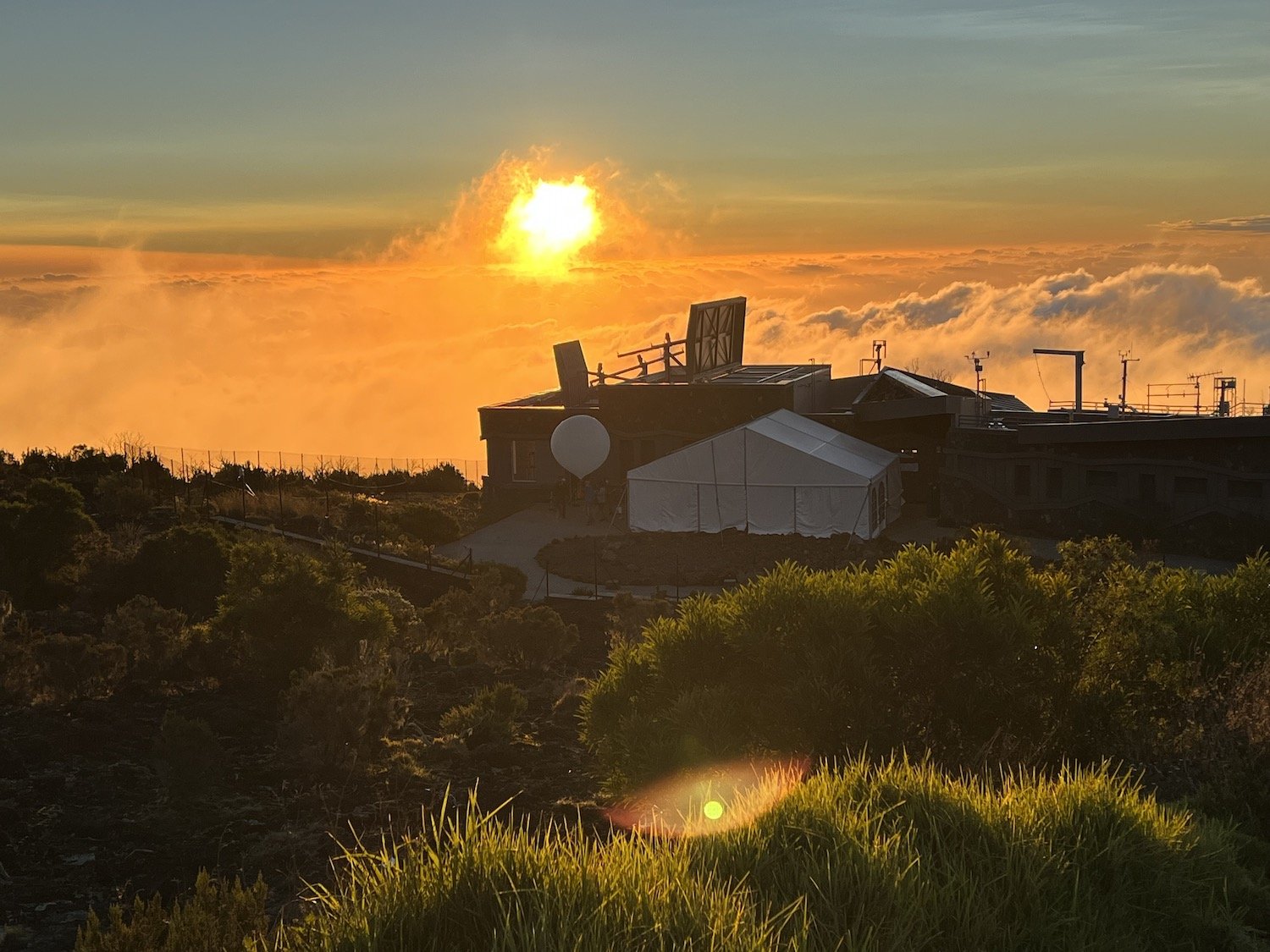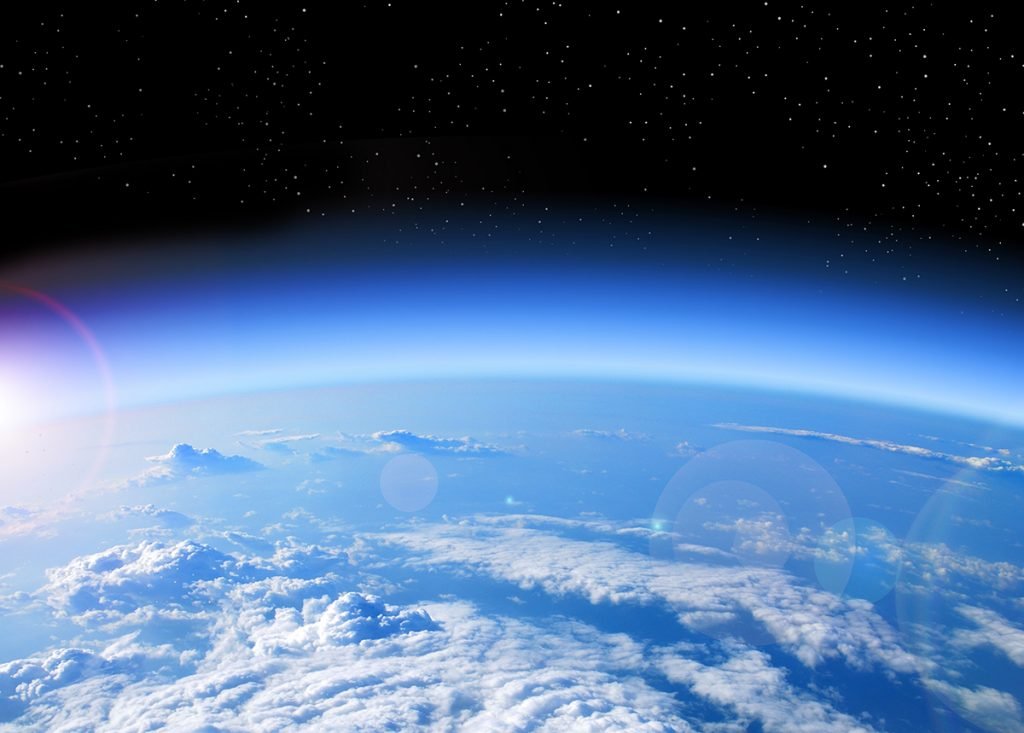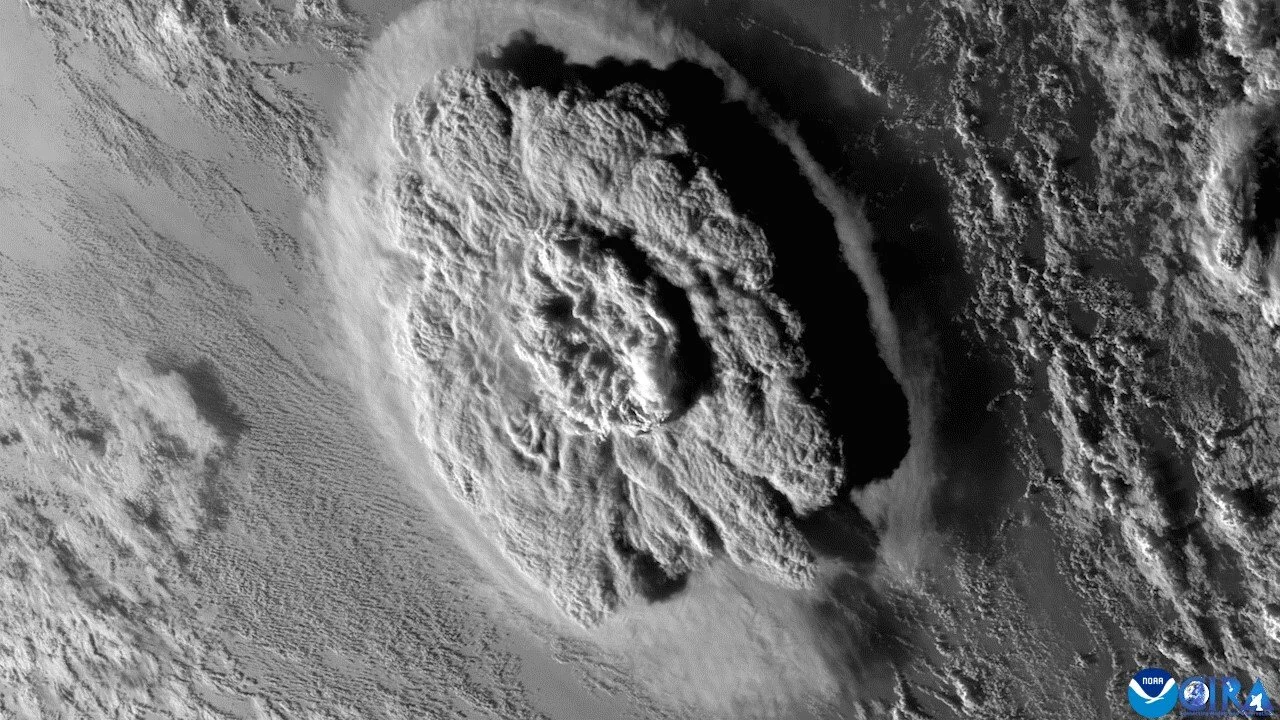
STratospheric Aerosol Research Program (STAR)
Why Study Particles (Aerosols) in the Stratosphere?
High above us in the stratosphere, the ozone layer protects life on Earth from the sun’s harmful ultraviolet rays. In the twentieth century, the adoption of refrigeration and other technologies introduced substances that deplete the ozone layer, creating “holes” in protection whose growth poses an existential threat to humanity. In the most successful environmental effort in human history, society applied science, innovation and cooperation to replace ozone-depleting substances and reverse damage to the ozone layer.
Today, new sources of pollution in the stratosphere — aerosol emissions from aircraft, rockets and Earth system-induced wildfires — pose new risks to the ozone layer, and the Earth system. As Earth system risks grow more dangerous, policymakers and other stakeholders around the world have begun to consider one rapid response to warming: increasing the reflection of sunlight from Earth by dispersing aerosols into the stratosphere, known as “stratospheric aerosol injection” (SAI). SAI is the most prominent proposal for a rapid response to cool the Earth system.
Society currently lacks sufficient observations, models and scientific understanding to monitor and evaluate the potential impacts of aerosols on the ozone layer and the Earth system. Accelerating open science and information in this area is critical to ensure Earth system safety and security and effective governance and decision-making for SAI.
Research Publications
STratospheric Aerosol Research (STAR) Program
SilverLining’s STratospheric Aerosol Research (STAR) Program is an interdisciplinary research program to advance science and innovation to improve understanding of the effects of stratospheric aerosols on the atmosphere and Earth system. The overarching goals of the program are to to expand observations of the stratosphere, to improve projections of the impacts of aerosols in the stratosphere, to support the assessment of the potential for stratospheric aerosol intervention (SAI) to reduce near-term Earth system risks, to provide open information to policymakers and the public, and to promote effective monitoring, regulation and governance of SAI.
Beginning in 2020, SilverLining engaged with experts in atmosphere and aerospace science from government science agencies, research laboratories and universities to define a roadmap for research on the effects of aerosols in the stratosphere. This included identification of modeling and observational gaps, and of aerosol generation and emission plume studies required to adequately characterize the localized evolution and dispersion of aerosols to support accurate model projections of their effects at larger scales. Executing against this roadmap, the STAR program includes coordinated research efforts on aerosol generation and emissions effects (STAR-Emissions Research), global simulations and analytical research on Earth system impacts (ARISE on SAI), and observations of the stratosphere (HOPE and V-RES). These programs interface with research efforts at other institutions, government agency programs, and SilverLining’s policy and engagement initiatives to expand and advance open research and information globally. View the roadmap here.
The STAR Program includes multiple parallel research efforts in different areas to help achieve this, including:
Improving the representation of stratospheric aerosol interactions in global computer models used to understand how these aerosol effects impact the stratosphere and the Earth system (ARISE).
Applying technology innovation, such as machine learning and cloud computing, to advancing projection and analysis of the Earth system and atmosphere, and to expanding access for researchers globally.
Using observations of real-world analogs to SAI — such as wildfires and volcanic emissions — to help to characterize the effects of aerosols on the stratosphere (HOPE).
Developing aerosol generation technology that delivers particles at the scale and with the characteristics required to study aerosol emissions for SAI.
Conducting high-fidelity computer simulations of localized aerosol emissions and testing these against small (plume)-scale controlled small/plume-scale emissions studies.
Publishing research and engaging with US and international science agencies to provide open data and information to support scientific review and assessment, to foster international scientific collaboration, and to promote trust.
STAR-Emissions Research (STAR-ER)
STAR-ER is a collaborative research effort among senior atmosphere, aerospace and propulsion researchers to study the generation of aerosols for SAI and to iteratively develop models and analyses to simulate localized aerosol characteristics. The objectives of STAR-ER are to:
deliver aerosol generation technology designed to meet the size, size-distribution, scale and other requirements to support modeling and analysis of SAI across multiple candidate materials;
to measure and analyze aerosol emissions at benchtop, mini-device and plume scales at sea-level and in stratospheric chambers;
to inform and refine high-fidelity models of the microphysics and chemistry of aerosol dispersal in a near-field plume dispersal from a jet engine;
to leverage high-fidelity high-resolution models and data to inform global-scale Earth System Model (ESM) simulations of the effects of SAI; and
to inform the design of controlled aerosol plume studies in the stratosphere.
Since its inception, STAR-ER has achieved several milestones in advancing fundamental science on aerosol processes, including high-fidelity aerosol-chemistry plume model simulations of stratospheric conditions and aerosol plumes.
Assessing Impacts and Responses of Intervention on the Earth Systems (ARISE)
ARISE is a collaboration among senior Earth system model developers and Earth system impacts researchers to define, develop, and deliver high-fidelity (representing, in detail, relevant systems and processes) simulations of scenarios relevant to near-term Earth system change and SAI. Commencing in 2020, ARISE supported the development of the first-ever high-fidelity model simulations of SAI under median scenarios for Earth system change using two major models—the National Center for Atmospheric Research’s Community Earth System Model (CESM) and the UK MET Office UK Earth System Model (UKESM). These simulations produced an unprecedented and highly comprehensive dataset for studying the influence of SAI on the Earth system — now widely adopted by researchers.
ARISE simulations and cloud capabilities also supported an innovative research effort at Colorado State University to use machine learning to detect the impacts of Earth system change versus SAI, featured in a dynamic session at the AWS advanced technology summit, Re:MARS. Watch the video, here.
High Altitude Observing Platform Explorer (HOPE)
Observing the stratosphere is challenging. It is located at altitudes higher than those reached by standard airplanes, drones, or balloons. Conditions are harsh, including extremely low temperatures, very low pressure, and strong winds that make it challenging to control observational instruments and vehicles. Furthermore, the stratosphere's diffuse nature means that aerosol particles are present in very low concentrations. Detecting and measuring these particles requires highly sensitive and advanced instruments.
In an effort led by lighter-than-air platform specialists Sarah Schubert and Dan Bowen, SilverLining launched a navigable, high-altitude, long-duration balloon with instruments for stratospheric observations: the High-altitude Observing Platform Explorer (HOPE). It incorporates recent innovations in hardware, communications, and instrumentation, giving researchers greater flexibility in terms of location, duration, altitude, and control. Developed using standard materials, HOPE is also affordable. It is designed to help expand measurements of the stratosphere as well as the number and geographies of people who can make them.
Rapid Volcano Response (V-RES)
The 2022 Hunga volcano was the largest underwater explosion ever recorded by modern instruments - a rare event in which the high altitude injection of aerosols and water vapor created a large natural experiment on the stratosphere. In an effort supported by the Gordon and Betty Moore Foundation, Schmidt Futures and Lyda Hill, SilverLining collaborated with scientists at NOAA to implement a rapid campaign to study the Tonga-injected material and to fund and coordinate scientific collaborators and specialized equipment from University of Houston and University if Reunion. The resulting observations produced new research that showed that injected water vapor can have a profound impact on the stratosphere and ozone layer. Learn more about the effort here.
More recently, SilverLining provided platforms and supported scientists in Iceland in observations of aerosol emissions from the Reykjanes volcano, a large natural experiment in marine cloud-aerosol effects with more information soon to come.
STAR Collaborators
The STAR Program is led by SilverLining’s Alex Wong and Jean-Francois Lamarque with principal investigators and collaborators across multiple disciplines from interdisciplinary experts from University of Central Florida, State University of New York (SUNY) Albany, Colorado State University, University of Washington, and VPE Engineering.









